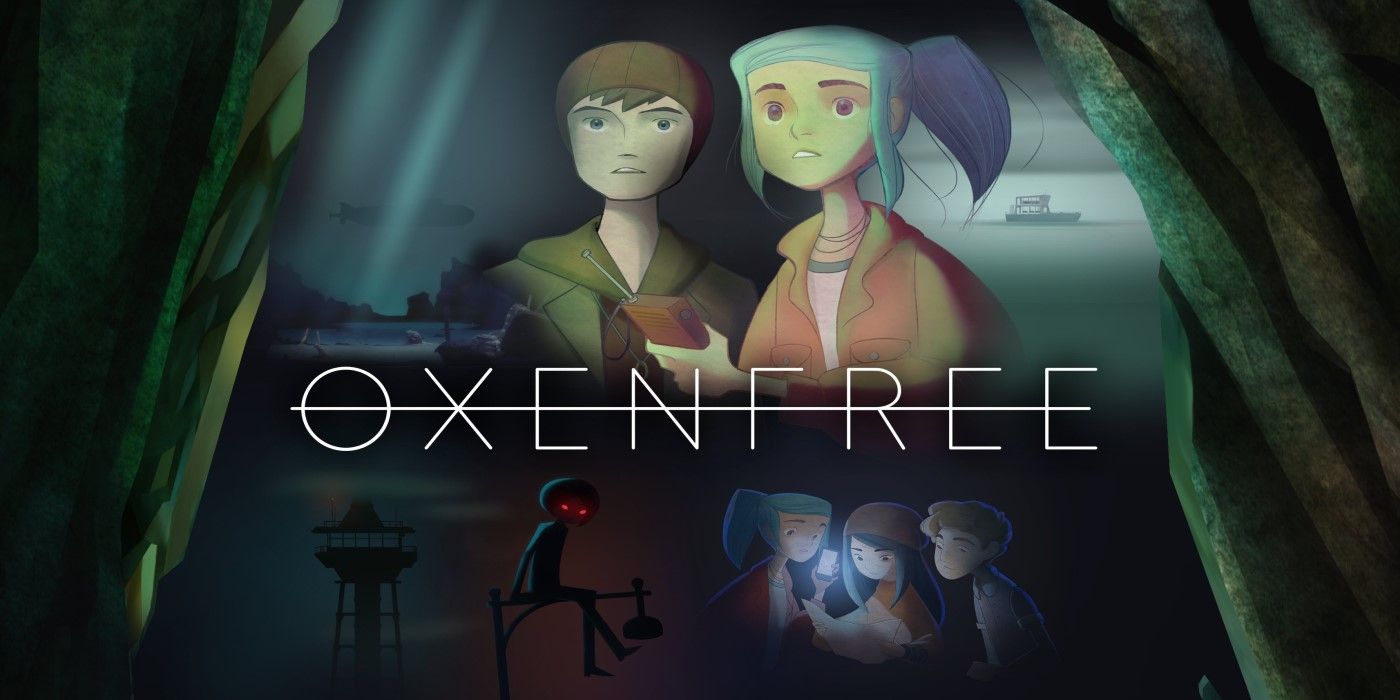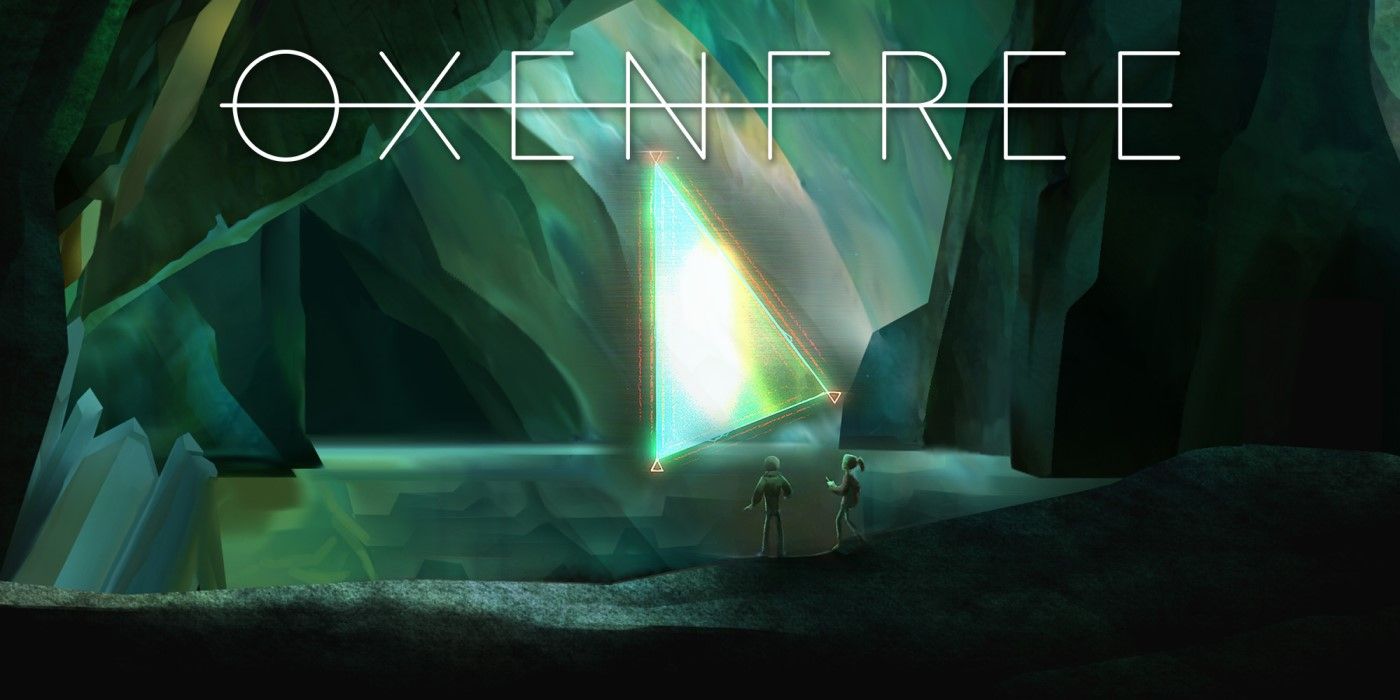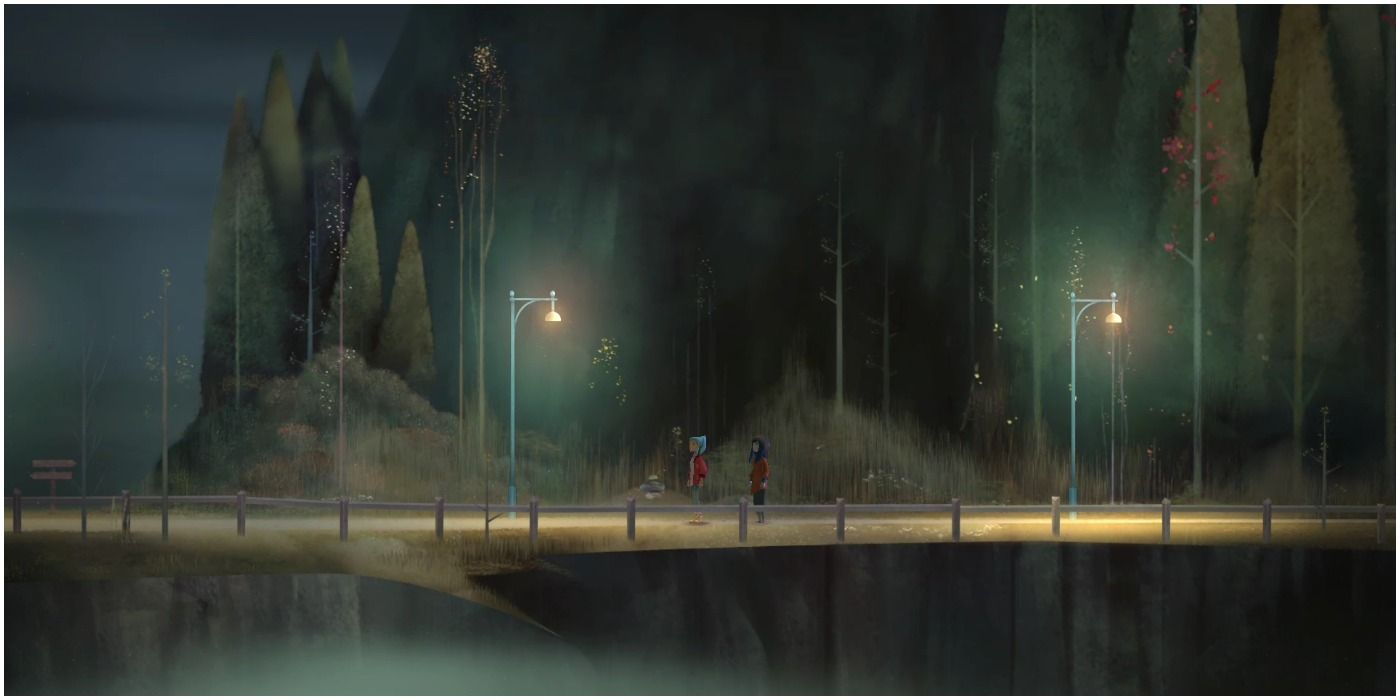Oxenfree is the story of a group of teenagers who unknowingly open a ghost rift during their sneaky overnight trip on a decommissioned military island. The game originally released in 2016, but saw a few updates afterwards and even a console release. Since then, players have flocked to the indie-horror game and really resonated with its characters and gameplay.
In an interview with Game Rant, Night School Studio co-founder Adam Hines discusses all things Oxenfree, from his personal connection to the game, to the development of the game, to the future of the game and any upcoming new projects. This transcript has been edited for brevity and clarity.
GR: Oxenfree has enjoyed 5 years since launch and the community still really resonates with the game. What part of the game resonates most with you personally?
AH: The overall tone, I think, and atmosphere. It’s a slow-paced game, told like a campfire story, and I like the opening bits of taking the ferry to the island, meeting up with your friends (and some enemies), and settling into a quickly darkening world. My favorite parts of the game are when all the characters are on screen, trying to talk over each other. I think all of the mechanics really come alive in those moments.
GR: What about Oxenfree's story do you think brings people into the community after 5 years?
AH: I think it’s the general relatability. Oxenfree is about a person entering the earliest years of adulthood, and is nervous about the transition. And then she has to deal with ghosts, too, which is most likely less relatable, but is the part that keeps you interested once you know all the characters’ names. Also, what people find creepy is a little more universal than what people find funny, so horror-ish games I think are easier to land with a wide swath of people than most genres.
GR: The intersection of indie games and horror games is an interesting one. What do you think Oxenfree uniquely brings to this combination?
AH: There are a lot of really fun, really innovative indie horror games out there that are very focused on scaring you, and Oxenfree is mostly focused on making you feel like a teenager. There’s no combat, and the only thing you can actively do is make small-talk and tune a portable radio, which I think helps make the player feel underequipped and vulnerable. Camera distance helps with that, too, as the characters are very tiny on screen, which gives the landscape a lot of room to breathe. This makes for a different perspective for something frequently creepy.
GR: How has your relationship with the game evolved in the 5 years since launch?
AH: When the game came out, I was still so mentally soaked in the process of finishing it (and continuing work on narrative patches like a New Game Plus feature that came post-launch) that it was extremely difficult for me to see the game clearly. Now, five years later, I feel like it’s even more hazy. It’s less a game, and more a time capsule of a very hectic and rewarding period of my life. When it came out, I had a sprawling list of things I would have done differently. Now, I don’t really remember what I would have changed if I could.
GR: What do you feel like you've learned about creating games since Oxenfree's development?
AH: I feel like I learn something new every day! But there are probably a few key takeaways* from the last several years. One is to know that the game you’re planning to make will never, ever be the game you’ll actually make, so it’s better to figure out what the game can’t be, and then what it has to be, and then just stick to that. Another is that while we don’t all necessarily have to work in the same office space, it has innumerable, microscopic benefits that are extremely hard to replicate when sitting in torn sweatpants.
*NOTE: Key takeaways are subject to change, and are usually violently overthrown by another, totally contradictory ‘key takeaway.’
GR: Oxenfree is pretty unique for a horror game. How were you and your team able to approach the tone and atmosphere you wanted?
AH: A lot of film comparisons! Sean and I were raised on a steady diet of genre-infused, Spielbergian dramedies when we were kids, and that kind of Close Encounters of the Third Kind casual, character focused approach to supernatural storytelling really shaped the game’s tone. We wanted it set in the Pacific Northwest pretty much exclusively because of Goonies. And I forced the team to watch John Carpenter’s The Fog, of which I think the only idea imparted was to make the game cloudy.
GR: What drew you to tell Oxenfree's particular story and not a different one?
AH: We wanted to make a game that was primarily focused on walking through interesting, evocative environments while having player-driven conversations that felt natural and uninterrupted. And we had a general idea of it being a story about a group of teenagers uncovering something supernatural. We thought at first that the game could be about aliens, probably because it was easier to think of stories that combined small town troubles with outer space creatures than with vengeful ghosts. But we ultimately gravitated towards telling a scary ghost story with the modestly plausible-sounding, “Now, how does all of this actually make sense?”-ness of something sci-fi.
GR: What has been the part you most enjoyed about the dev process?
AH: Reviewing a completed scene. It’s great when all the pieces are together, the voice over is in, the animations are working, the pathfinding is working, and everyone is really pleased with what they’ve done, but they know it’s not quite there, yet. I like when something is 80% done, and you can start to hammer away at the fine grain details that make something really memorable.
GR: What are you looking forward to for the next 5 years of Oxenfree being available? Any plans for the future for the game itself or the studio?
AH: It still makes me smile when I read a post by someone who just recently discovered the game and wanted to write about it. Even if they hated it! It’s always interesting, reading what people gleam from the game, what they like about it, what they don’t, what small detail they alone appreciated. And as for future plans, a TV Show adaptation is slowly being fed through the intestinal tract of the Hollywood production system. Meetings with film people have a very different taste than meetings with game devs. Game development folk always look frayed, bleary-eyed. Film people all look like they just got back from vacation.
GR: Anything else Night School is working on that fans can look forward to?
AH: We’re currently eyeing a few new projects, all of which are very dark and mysterious. I hope fans of Oxenfree will dig whatever is next!
[End.]
Oxenfree is available now for Mobile, PC, PS4, Switch, and Xbox One.



